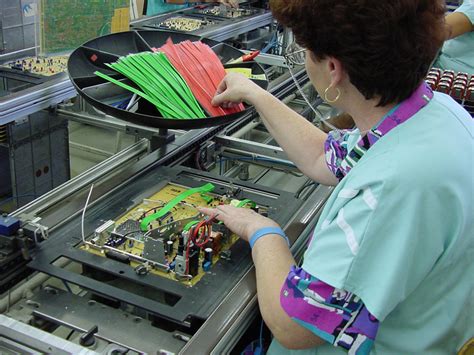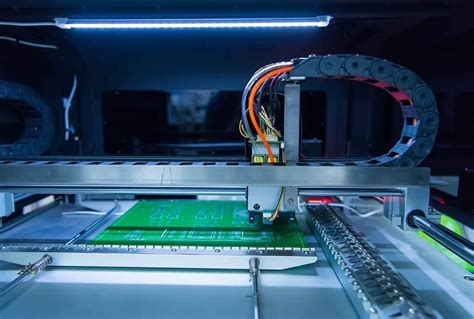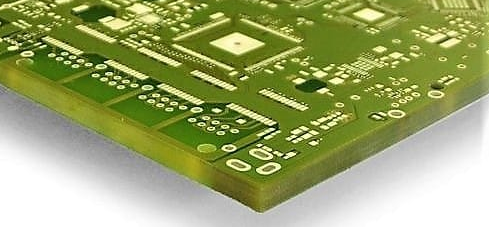Understanding Bare PCB Manufacturing Processes and Techniques
Key Takeaways
Understanding the complexity of bare PCB manufacturing is crucial for anyone involved in the electronics industry. You should recognize that the journey from design to production is filled with essential steps that play a vital role in ensuring performance and reliability. Factors such as pcb manufacturing cost can vary significantly based on materials and processes used, which is something to bear in mind when choosing between different pcb manufacturing companies. It’s also worth noting that as technology evolves, recurring themes such as automation and innovative machinery are reshaping the landscape of the pcb manufacturing business. Realizing how integral these elements are can help you appreciate the sophisticated level of expertise required for quality production.
Moreover, effective quality control measures are not just an afterthought; they are critical components interwoven into the entire manufacturing process. By staying informed about these aspects, you equip yourself better for making knowledgeable decisions, whether you’re designing your first PCB or assessing various suppliers for your next project.
“In PCB manufacturing, understanding each process intricately can save you time and reduce costs in the long run.”
Introduction to Bare PCB Manufacturing
In the realm of pcb manufacturing, understanding the foundational processes is essential for both newcomers and seasoned professionals. Bare PCB manufacturing involves a meticulous journey, starting from an innovative design and culminating in a finished product ready for use. This process is not only about creating effective circuitry; it encompasses various phases that integrate high-tech automation, sophisticated machinery, and skilled human input to optimize performance. When engaging with pcb manufacturing companies, you will discover that they adopt strategic practices to reduce pcb manufacturing costs while ensuring quality. The balance between efficiency and reliability is paramount in the pcb manufacturing business landscape, where even minor errors can lead to significant setbacks. As you delve deeper into this world, you’ll learn how the synergy of technology and human expertise plays a crucial role in achieving superior performance standards, ultimately leading to breakthroughs in electronic applications. Exploring resources like Andwin PCB can provide additional insights into innovative methods shaping the future of bare PCB production.
Design Phase: From Concept to Schematic
The design phase is a crucial starting point in the PCB manufacturing process, where your vision transforms into reality. Initially, you will move from a conceptual idea to creating a detailed schematic diagram. This diagram serves as a blueprint for the entire PCB manufacturing journey, allowing you to visualize the electrical connections and components needed for your project. You can utilize specialized software tools that cater specifically to pcb manufacturing companies, offering features that streamline the design process and minimize errors.
During this phase, consider the pcb manufacturing cost as you select components and layouts. Each decision can significantly impact final costs, whether through material choices or complexity in design. It’s essential to balance functionality with budget constraints, ensuring that the design remains effective while being economically feasible for your pcb manufacturing business.
Moreover, collaboration with engineers during this stage is vital. They can provide insights into component selection and potential design challenges that may arise during production. This collaborative approach not only refines your schematic but also integrates automation capabilities—crucial in optimizing efficiency in later stages of production.
To illustrate this crucial step further, you might look at a simple table outlining common design considerations:
| Design Aspect | Description |
|---|---|
| Component Placement | Efficient layout for minimal signal loss |
| Trace Width | Determines current-carrying capacity and cost |
| Layer Count | Affects complexity and cost |
| Design Rule Checks (DRC) | Ensures no violations of fabrication limits |
By thoughtfully navigating through this design phase, you lay a robust foundation for successful PCB manufacturing, ultimately guiding your project toward successful completion.
Automation in Bare PCB Production
In the high-stakes world of pcb manufacturing, automation is a critical component driving efficiency and precision. As you navigate through this complex industry, you’ll discover that automated systems optimize various stages of the pcb manufacturing process, from initial design through to final production. Advanced machinery, such as automated pick-and-place machines and computer numerical control (CNC) routers, significantly reduce the pcb manufacturing cost by streamlining operations and minimizing human error. These technologies enable pcb manufacturing companies to enhance throughput while maintaining the highest levels of quality and accuracy. You can rely on automation to not only improve production speed but also to ensure consistency, allowing for rapid scalability in your pcb manufacturing business. Moreover, with real-time monitoring systems in place, you can assess performance metrics and identify potential issues early on, fostering a proactive approach to quality control. Emphasizing automation in your strategies not only elevates productivity but also places you ahead in the competitive landscape of pcb manufacturing.
Key Machinery Used in PCB Fabrication
In the realm of pcb manufacturing, the machinery employed plays a crucial role in ensuring precision and efficiency throughout the process. Different pcb manufacturing companies utilize various types of equipment tailored to specific stages of production. For instance, etching machines are pivotal in transferring circuit designs onto the copper layer, while drilling machines create holes for vias and component leads, thereby influencing the overall functionality of your printed circuit board. Additionally, automated pick-and-place machines are integral to streamline assembly tasks, positioning components accurately on the board for soldering. Understanding these machines not only gives insight into the pcb manufacturing cost, which can vary significantly based on complexity and volume, but also highlights the competitive landscape of your pcb manufacturing business. Keeping up with advancements in this machinery is essential, as newer technologies provide enhanced capabilities and greater production reliability, ultimately supporting your goals within the electronics industry.
Human Roles and Expertise in PCB Manufacturing
In the realm of PCB manufacturing, the human element cannot be underestimated. Professionals with diverse skills and backgrounds work collaboratively to ensure the success of PCB manufacturing companies. Each individual plays a crucial role, from design engineers who translate concepts into functional layouts to machine operators who oversee the complex equipment required for production. Your understanding of these roles can greatly impact your business decisions, particularly concerning pcb manufacturing cost and quality outcomes. Engineers must stay current with evolving technologies and techniques to foster innovation within their teams, while technicians are essential for troubleshooting machinery and maintaining production standards. Furthermore, workers are involved in every stage of the process, emphasizing that effective communication and teamwork are vital within any pcb manufacturing business. As you delve deeper into this industry, recognizing the interplay between human expertise and technological advancements will become increasingly important for optimizing both efficiency and reliability in production. This combined effort leads to better-built products that meet customer expectations, which is key in a competitive marketplace where quality is paramount.
Quality Control Measures in Bare PCB Production
In the competitive realm of pcb manufacturing, maintaining high-quality standards is paramount. Quality control measures are implemented at various stages of the production process to ensure that each bare PCB meets stringent specifications and functions reliably in its intended application. From the initial design to the final assembly, quality assurance involves both automated checks and human oversight. One effective approach is the utilization of automated optical inspection (AOI), which swiftly identifies defects such as misaligned components or soldering issues at earlier stages, significantly reducing waste and pcb manufacturing costs. Furthermore, pcb manufacturing companies often adopt rigorous testing protocols, including electrical testing and environmental stress testing, to assess the durability and functionality of PCBs under real-world conditions. These processes not only enhance product reliability but also foster customer trust in the pcb manufacturing business. It is essential to create a culture of quality among all team members, as their expertise contributes significantly to minimizing errors and ensuring product excellence. With such comprehensive quality control measures in place, you can feel assured that your PCBs will perform optimally in their respective applications, paving the way for sustained growth and reputation in this dynamic industry.
Challenges and Solutions in the Manufacturing Process
In the realm of pcb manufacturing, numerous challenges emerge that can hinder efficiency and increase costs. A significant obstacle is maintaining consistency in the quality of printed circuit boards. Variability in raw materials or machinery can lead to defects, which may cost your pcb manufacturing business both time and money. To combat this, pcb manufacturing companies often implement rigorous quality control measures throughout every stage of the production process, from material selection to final assembly. Additionally, the rising pcb manufacturing cost is a concern for many businesses striving to stay competitive. Solutions like investing in automation and advanced machinery have shown promising results, enhancing precision while minimizing human error. Another challenge is adapting to rapid technological changes; staying updated with the latest design technologies and manufacturing practices is crucial for success. Continuous staff training and development help mitigate these risks by ensuring that your team is well-versed in new processes and tools. Moreover, fostering strong relationships with suppliers can provide better access to high-quality materials at competitive prices, thereby streamlining your production process. Addressing these challenges proactively not only solidifies your position in a competitive landscape but also ensures that you meet customer demands efficiently and effectively.
Future Trends in PCB Manufacturing Technology
In the ever-evolving landscape of pcb manufacturing, staying ahead of future trends is essential for manufacturers and designers alike. The integration of advanced technologies, such as the Internet of Things (IoT) and artificial intelligence (AI), is anticipated to revolutionize how pcb manufacturing companies operate. These innovations will not only streamline production processes but will also enhance pcb manufacturing cost efficiency by minimizing waste and optimizing resource allocation. Furthermore, the rise of flexible PCBs and 3D printing technologies is expected to support a more intricate design approach, enabling the creation of complex circuit patterns that traditional methods may not achieve. As sustainability continues to gain traction, eco-friendly materials will likely become a focus for many pcb manufacturing businesses, pushing them toward greener practices that reduce environmental impact while maintaining performance standards. In embracing these trends, you can ensure that your operations are not only competitive but also aligned with the future demands of the industry.
Conclusion
In navigating the landscape of bare PCB manufacturing, it’s crucial to recognize that multiple factors converge to influence the PCB manufacturing cost and overall success of your PCB manufacturing business. Each step in the manufacturing process, from initial design to final production, plays a vital role in determining the quality and reliability of the end product. When you collaborate with reputable PCB manufacturing companies, you can leverage their experience and technological advancements to optimize your production capabilities. It’s essential to stay informed about emerging trends and innovations in PCB manufacturing, as these can significantly impact efficiency and cost-effectiveness. Furthermore, by maintaining a strong focus on quality control measures throughout the process, you can ensure that your products not only meet but exceed industry standards, thereby enhancing your competitive edge in a rapidly evolving market. In essence, mastering these intricacies will lead you toward sustainable growth in the dynamic field of PCB manufacturing.
FAQs
What is bare PCB manufacturing?
Bare PCB manufacturing refers to the production process of printed circuit boards (PCBs) that have not yet been populated with components. This involves creating the substrate on which circuits will be printed, ensuring that pathways for electrical connections are etched accurately.
How do I choose the right PCB manufacturing company?
When selecting a PCB manufacturing company, consider factors such as their experience, quality control processes, and customer reviews. It is essential to evaluate their capabilities in handling your specific requirements and to request sample products if possible.
What determines the cost of PCB manufacturing?
The PCB manufacturing cost can vary based on several factors including the complexity of the design, the materials used, production volume, and additional features such as surface finish. Understanding these elements can help you negotiate better terms with manufacturers.
Are there different types of PCB manufacturing processes?
Yes, there are various types of PCB manufacturing processes, including subtractive methods (where layers are removed to create circuits) and additive methods (where layers are added). Each process has its application depending on the design specifications and scalability required.
What role does automation play in PCB manufacturing?
Automation significantly enhances efficiency and precision in PCB manufacturing, reducing human error while increasing production speed. Many PCB manufacturing companies have integrated automated systems to maintain optimal performance throughout their production lines.
How do human roles influence PCB manufacturing quality?
Despite advances in automation, human expertise remains crucial in PCB manufacturing business practices. Skilled technicians oversee operations, ensure quality control measures are met, and make critical decisions during production that machines cannot handle alone.
For more detailed insights into these processes and to explore your options further, please click here: Andwin PCB Manufacturing.






